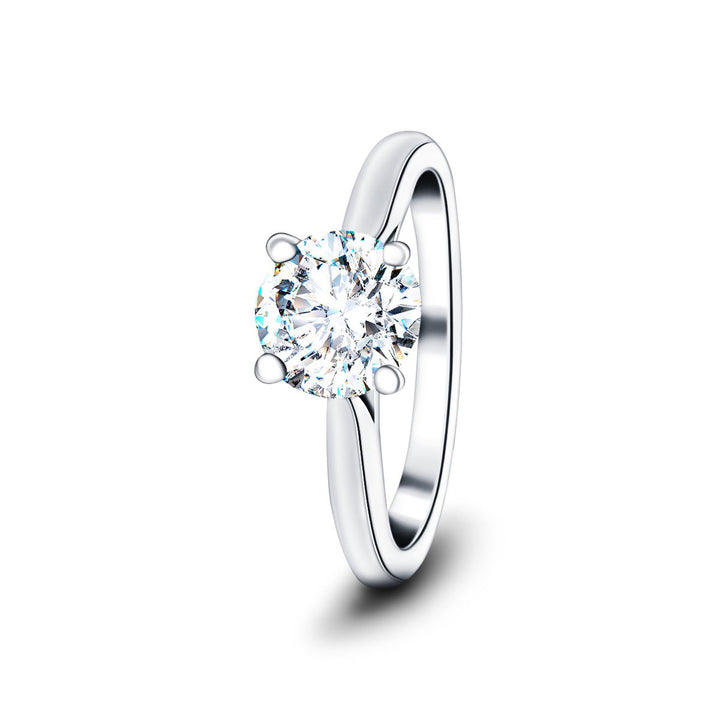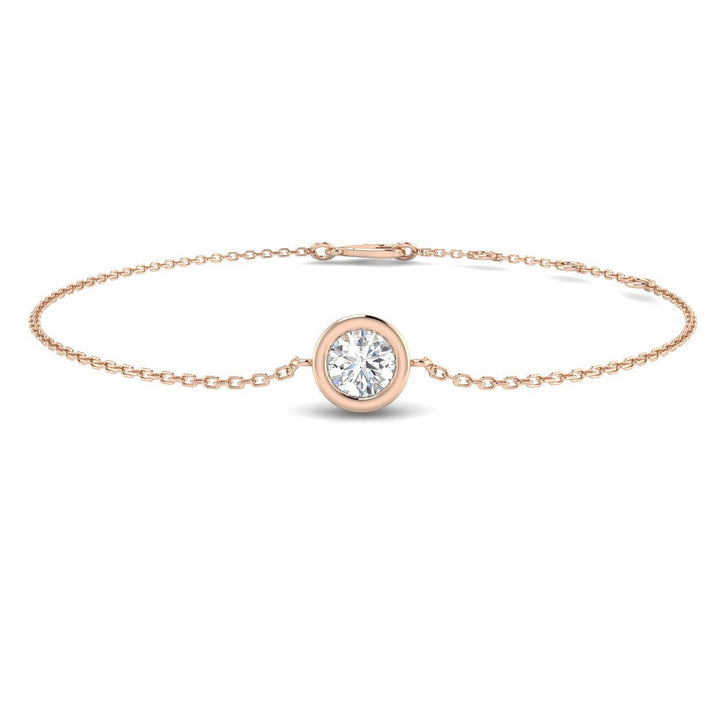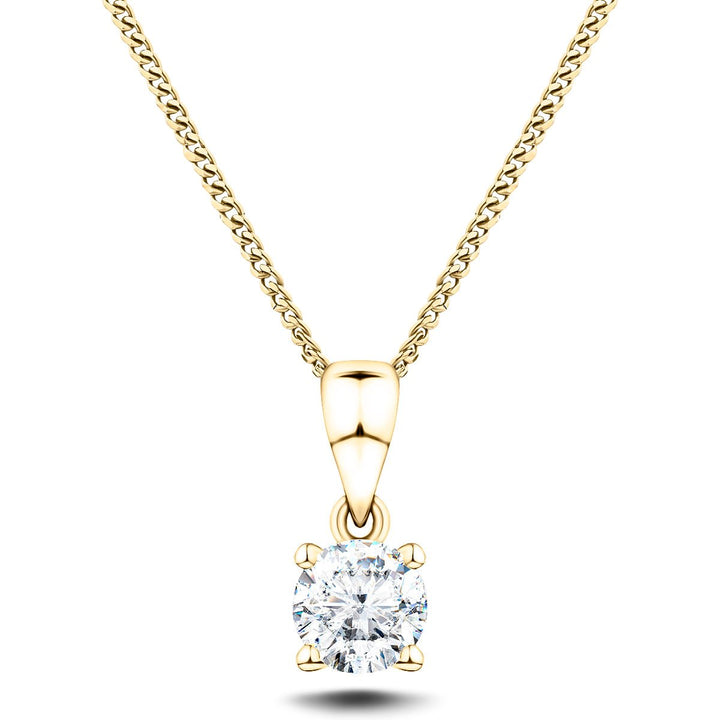The burgeoning field of diamonds made in a lab, known for their identical chemical and physical properties to those extracted from the earth, has initiated a compelling dialogue within the gemstone industry. These stones, crafted meticulously in controlled environments, offer an intriguing juxtaposition to the millennia-old process of natural diamond formation.
As consumer sentiment increasingly leans toward sustainability and ethical sourcing, the appeal of lab-grown diamonds grows, suggesting a seismic shift in consumer preferences that could reshape the traditional diamond market. This discourse seeks to explore the nuanced complexities of lab-created diamonds, juxtaposing their attributes with those of natural diamonds, and questioning whether society's long-standing enchantment with natural stones may be on the cusp of transformation.
One must consider if the blend of modernity and conscience presented by diamonds made in a lab could indeed redefine what we consider to be the quintessence of luxury and rarity in gemstones.
Key Takeaways About Diamonds Made In a Lab
- Lab-created diamonds have identical physical, chemical, and optical properties to natural diamonds.
- Ethical considerations favour lab-grown diamonds due to avoiding human and environmental tolls of mining.
- Lab-grown diamonds are typically 40–50% less expensive than mined diamonds.
- Lab-grown diamonds align with contemporary values of sustainability and social consciousness.
Understanding Lab-Created Diamonds
Lab-created diamonds, also known as synthetic or cultured diamonds, are cultivated in controlled laboratory environments using advanced technological processes that replicate the conditions under which natural diamonds are formed. These methods include high-pressure high temperature (HPHT) and chemical vapor deposition (CVD), which simulate the natural forces of heat and pressure that created diamonds over millennia.
In the HPHT process, a small diamond seed is placed in carbon and exposed to temperatures of about 1,400–1,600 °C and pressures above 5.5 GPa. The carbon melts and starts to form a diamond around the starter seed. It is then carefully cooled to form a pure carbon diamond. On the other hand, CVD involves breaking down molecules of a carbon-rich gas, such as methane, into carbon and hydrogen atoms, which are then deposited onto a substrate, allowing the diamond to grow layer by layer.
Diamonds made in a lab are identical to natural diamonds in terms of their physical, chemical, and optical properties. They exhibit the same fire, scintillation, and brilliance as naturally mined diamonds, making them suitable for use in high-quality jewellery, including engagement rings. These diamonds prioritize the famous four Cs—cut, clarity, colour, and carat—just like their natural counterparts, but without the ethical and environmental drawbacks of traditional mining methods.
Comparing Lab-Grown and Natural Diamonds
When evaluating the distinctions between lab-grown and natural diamonds, it is crucial to consider factors such as origin, environmental impact, ethical implications, and market trends.
Lab-grown diamonds, first produced in the 1940s and significantly improved by the 1980s, are chemically and structurally real diamonds created in controlled laboratory environments. These stones are identical to their natural counterparts in terms of atomic, physical, and optical properties.
The ethical considerations are substantial, with some jewellery designers exclusively using lab-grown diamonds to avoid the human and environmental toll associated with traditional mining. The environmental impact of lab-grown diamonds is debated, especially regarding their energy consumption and emissions during production, yet they are generally seen as less ecologically damaging than mined diamonds.
In the marketplace, lab-grown diamonds have been gaining rapid acceptance due to their affordability and ethical appeal. The price difference between lab-grown and natural diamonds is notable, with synthetic options often being less expensive, though they may not retain the same resale value as natural diamonds. As consumer demand grows and supply continues to increase, lab-grown diamonds present a viable alternative for those seeking sustainable and ethically sourced gemstones.
Ella Lab Diamond Solitaire Engagement Ring 4.00ct D/VVS Platinum

£9,495.00
£18,116.00
Experience the ultimate in luxury with this Ella Lab Diamond Solitaire Engagement Ring, featuring a 4.00ct D/VVS-graded lab-created diamond set in platinum. UK designed with an IGI-certified brilliant round diamond and a lifetime workmanship guarantee, this ring is a true… read more
Environmental and Ethical Considerations
Moving beyond the comparison of origins and market implications, the environmental and ethical considerations of lab-grown versus mined diamonds reveal a complex landscape of sustainability challenges and ethical dilemmas.
Amidst the glittering allure of both lab-grown and natural diamonds, the following factors weigh heavily on the scale of preference:
1. Carbon Footprint: Lab-grown diamonds, while avoiding the extensive environmental degradation associated with traditional mining, often have a higher carbon footprint due to energy-intensive production processes.
2. Kimberley Process Compliance: Natural diamond extraction has historically been marred by conflict financing and labour abuses. The Kimberley Process seeks to stem the flow of conflict diamonds, but its effectiveness is debated, and it does not address all ethical concerns.
3. Finite Supply Concerns: The extraction of natural diamonds taps into the Earth's finite supply, raising issues of sustainability and long-term environmental impact, whereas lab-grown diamonds can be produced indefinitely.
4. Chemical and Physical Parity: Both lab-grown and natural diamonds share identical chemical and physical properties, yet lab-grown diamonds offer an ethical advantage by eliminating the risk of unethical mining practices.
Understanding these considerations is crucial for consumers, who are increasingly mindful of the ethical and environmental implications of their purchases. The industry's pivot toward more sustainable practices reflects this growing consciousness.
Lab Solitaire Diamond Bracelet 1.00ct D/VVS Quality in 18k Rose Gold

£1,350.00
£2,576.00
The Lab Solitaire Diamond Bracelet 1.00ct D/VVS Quality in 18k Rose Gold is a beautiful piece of jewellery. It features a 1.00ct lab-grown solitaire diamond that is D/VVS quality, which means that it is of the highest quality and has… read more
Market Value and Perceptions
Frequently, the market value and perceptions of lab-grown diamonds reflect a complex interplay between affordability and the traditional valuation of luxury goods. Lab-grown diamonds, typically 40–50% less expensive than their mined counterparts, have carved a niche in the diamond industry by offering a cost-effective option for consumers. Their reduced price point does not translate into a strong investment for resale; however, it democratizes access to what was once an exclusive symbol of wealth and status.
Appraisers now recognize and assign market value to lab-grown diamonds, indicative of a shifting paradigm within the jewellery industry. As consumer acceptance grows, the perceptions surrounding these diamonds evolve, particularly among a younger demographic that prioritizes ethical sourcing and environmental considerations.
The Natural Diamond Council and other traditional industry entities often emphasize the unique, millennia-long formation of natural diamonds, which can affect how consumers perceive lab-grown alternatives. Despite this, the growing traction of lab-grown diamonds suggests a trend toward pragmatic valuation, where the intrinsic qualities and ethical advantages outweigh historical sentiment. As market perceptions continue to shift, lab-grown diamonds are increasingly seen as a legitimate, responsible choice, aligning with contemporary values of sustainability and social consciousness.
Making an Informed Decision
As market perceptions continue to evolve, consumers seeking to balance cost-effectiveness with ethical considerations are increasingly faced with the decision of choosing between lab-grown and natural diamonds. The jewellery industry has witnessed a significant shift as lab-created diamonds emerge as a viable option for many, especially in the context of an engagement ring where both symbolism and value are paramount.
To form a clear picture, consider the following:
1. Quality and Authenticity: Lab-grown stones are real diamonds with identical properties to their mined counterparts, certified to the same standards by reputable institutions like the GIA.
2. Ethics and Sustainability: Choosing a lab-created diamond can alleviate concerns over the ethical implications of mining, including the exploitation of workers and environmental degradation.
3. Cost Efficiency: Lab-created diamonds typically offer a more affordable price point, providing the allure of real diamonds without the traditional cost barrier.
4. Environmental Impact: While lab-grown diamonds are often marketed as eco-friendly, potential buyers should scrutinize claims regarding renewable energy usage and carbon emissions to make a truly informed choice.
Ultimately, whether one opts for a lab-grown or a natural diamond, the informed decision should be grounded in a thorough understanding of these factors.
Lab Diamond Solitaire Necklace Pendant 4.00ct D/VVS in 18k Yellow Gold

£9,385.00
£17,906.00
Add an extra touch of luxury to your collection with this dazzling Lab Diamond Solitaire Necklace Pendant. The pendant is made of 18k yellow gold. It boasts a gorgeous round solitaire diamond weighing 4.00 carats, graded D/VVS by IGI. With… read more
Frequently Asked Questions About Diamonds Made in a Lab
Will Lab Grown Diamonds Replace Real Diamonds?
Lab-grown diamonds are increasingly prevalent, offering similar characteristics to mined diamonds at a reduced cost, potentially influencing market dynamics and consumer preferences, yet full replacement of natural diamonds remains uncertain.
Are Lab Created Diamonds Equal to Natural Diamonds?
Lab-created diamonds possess equivalent properties to natural diamonds in terms of optical, chemical, and physical attributes, thus meeting the criteria for being considered 'equal' in a gemological and practical sense for consumers.
Why Not to Buy a Lab-Grown Diamond?
Lab-grown diamonds may present environmental concerns, potential lower resale value, and reduced job creation in comparison to mined diamonds, despite advancements in sustainable production and claims of certain labs being fully hydro-powered.
What Are the Disadvantages of Lab-Grown Diamonds?
Lab-grown diamonds, while cost-effective and ethically sourced, may carry disadvantages such as lower resale value, potential environmental impact from energy-intensive production processes, and less investment appeal compared to natural diamonds.
Maya Lab Diamond Bezel Solitaire Engagement Ring 2.00ct G/VS 18k Yellow Gold

£1,955.00
£3,731.00
Embrace elegance with the Maya Lab Diamond Bezel Solitaire Engagement Ring, meticulously crafted by hand in the UK. This exquisite ring boasts a round, 2.00 carat G/VS-graded lab-grown diamond, bezel-set in luxurious 18k yellow gold. IGI certified and UK hallmarked,… read more
Explore the Future of Luxury with After Diamonds
After Diamonds: Where Elegance Meets Sustainability
We have explored the remarkable rise of lab-created diamonds in the luxury gemstone market. These ethical and environmentally-friendly gems have not only matched the brilliance and durability of their natural counterparts but have also captured the hearts of consumers who prioritize responsible consumption.
Due to technological advancements and a growing societal emphasis on sustainability, the diamond industry is on the verge of transformation. Amidst this evolution, After Diamonds stands as a visionary leader, offering exquisite collections that not only reflect meticulous craftsmanship but also embody the values of our modern era.
Now is the time to be a part of the future of luxury. Discover the allure of real diamond jewellery made with lab-grown diamonds at After Diamonds. Our handcrafted pieces tell stories of beauty, innovation, and an unwavering commitment to ethical standards. Don't miss the opportunity to own a piece of the future today.
Visit After Diamonds now to explore our stunning collections, all backed by a lifetime workmanship guarantee. Make a choice that shines brighter, not just for you, but for the world. Choose After Diamonds—where timeless beauty and modern values come together. Embrace elegance and sustainability in one extraordinary experience.
Further Reading
1: Can lab-grown diamonds replace the real thing?: https://www.cnn.com/style/article/lab-grown-diamonds-ethical-luxury-sept/index.html
2: 7 Reasons not to buy a lab-grown diamond: https://frankdarling.com/blog/7-reasons-not-to-buy-a-lab-grown-diamond/
3: Lab grown or natural diamonds? The choice is getting clearer for consumers and retailers: https://www.forbes.com/sites/pamdanziger/2021/02/14/lab-grown-or-natural-diamonds-the-choice-is-getting-clearer-for-consumers-and-retailers/
4: Lab-grown diamonds are finally having their moment: https://www.fastcompany.com/90887148/lab-grown-diamonds-having-their-moment
5: Guide to lab created diamond engagement rings: https://www.nathanalanjewelers.com/lab-diamonds-vs-natural-diamonds




